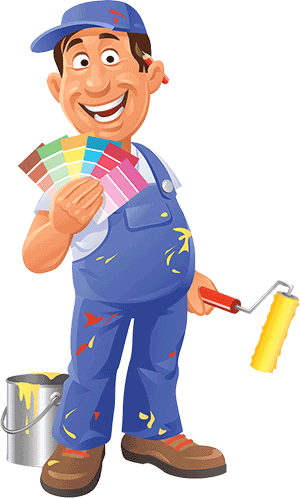
Choosing what paints to use when remodeling a room can be difficult; choosing paints for your whole home can be even more challenging. The most obvious challenge is finding what colours you want to use; there’s so many different shades and hues to choose from, and finding a colour scheme that flows properly through your house, that tells a story; that’s one of the marks of great interior design. A lot of the time, colour will be the only focus of someone who’s not “in the know” about paint, but there are other considerations to be had. There’s a wide variety of different types of paint. Consider wood varnish; you can use the varnish to imbue your wood with colour, which makes it very similar to painting. You would never, however, use wood varnish on brick, because it wouldn’t give you the effect you wanted. There are also acrylic and oil based paints, each of which has advantages and disadvantages. Today, let’s focus on a particular type of acrylic paint, one we find endlessly useful: elastomeric paint.
Elastomeric comes from a portmanteau, elastomer; it’s a combination of the words “elastic” and “polymer”. While everyone reading knows what an elastic is, it can be useful to consider it’s properties: an elastic can be stretched out well beyond its useful shape, but when you stop stretching it, its shape goes back to normal. A polymer is essentially a large molecule with repeating patterns. An elastomer, then, is a large molecule that, after having been stretched out, returns to its original configuration. Elastomeric paints have two incredibly useful qualities: they are both viscous and elastic. Without viscosity, elastomeric paints couldn’t be applied, and their elasticity gives them incredible resilience; as your house expands and contracts throughout the day, the paint will do so as well, owing to its elasticity. This makes elastomeric paints incredibly long lasting.
The durability of elastomeric paints makes them incredibly useful for painting exteriors, which are the most exposed to the elements. Originally, these paints were designed to paint stucco; today, elastomeric paints can be found on concrete, brick, and a wide variety of other materials that might have otherwise been tough to paint. Elastomerics are less commonly used on wood, because wood is not only porous, but tends to rot if it’s not allowed to breathe. The tough and flexible elastomer coating doesn’t give wood enough air to breath if it begins to absorb water, so an improperly applied elastomeric paint on wood can cause you problems down the line.
One of the main advantages of hiring experienced Winnipeg painters is that they’ll know what types of paints to use on each surface around your home. That makes your decision making a little bit easier; they’ll focus on function so you can focus on aesthetics. Aesthetics can be a bit overwhelming, too; there’s a lot of choice between different colours. That’s why great painters aren’t just vested in types of paint; they’ve got a good eye for colours, too, and will be more than happy to do a colour consultation with you.


